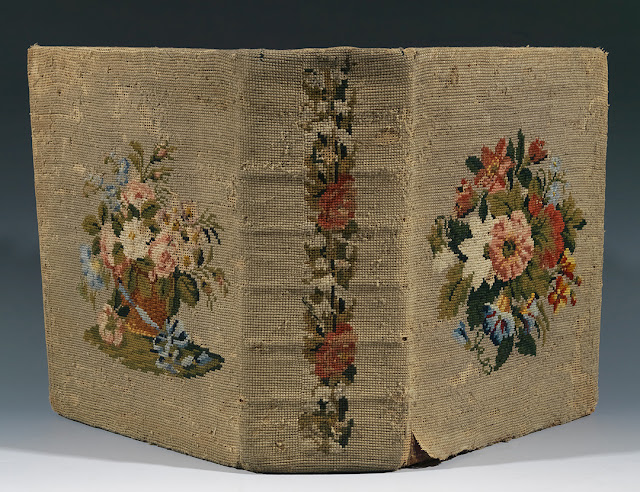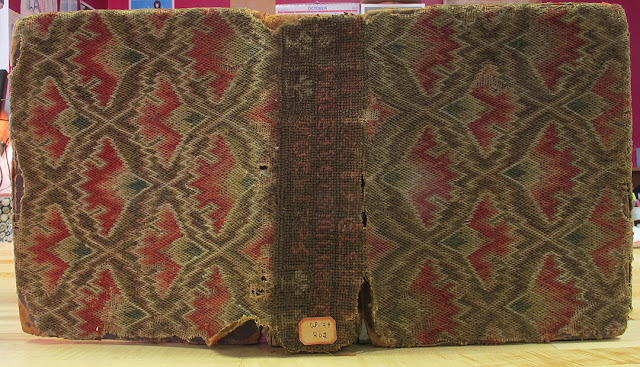Background
For just over ten years, I have had the privilege to be charged with the care of some of our country's most significant historical papers at the Historical Society of Pennsylvania. Hidden among our vast collections of personal papers, manuscripts and genealogical materials are special gems such as this needlepoint covered bible. HSP does not collect artifacts. But when something such as this comes with a collection and is part of the researchable materials... well, who are we to discard it. And of course by now these have become items of research value themselves.
The Smith Family Bible's embroidered cover dated to the mid 18th Century.
For me though, the true gem is the list of needle work projects found at the front of one of the earliest diaries.
(It is also featured in the previous post in the picture with Jacques.)
As if all of that wasn't cool enough we even have an example of Elizabeth's actual needlework. In addition to her diaries, her husband Henry's business ledgers and letter books, we have her personal Bible for which she embroidered this cover in 1752 when she was 18 years old.*
*Update: Oct 28th. While poking around on the internet I discovered I made a mistake with the year. It actually says 1759. This is according to an interesting and informative blog post on Provenance online Project supported by University of Pennsylvania. The author of the post, Laura Aydelotte, also points out: In an entry dated January 15, 1759, when she was 24 years old, she writes: “Stayed home all day. Began to work a large worsted bible cover.”
This is actual color. No kidding. If you look closely at the color difference between the spine and the covers you can guess that this was kept on a shelf between other books, which is what protected the colors on the covers, while the colors on the spine (especially the yellow) have faded.
It is interesting to look at this design next to the Smith Family Bible and note the similarities between the patterns.
And what gets us crafty people really excited is this:
The cover of the original binding has broken, allowing us to see the back of her needlework.










Comments
Post a Comment